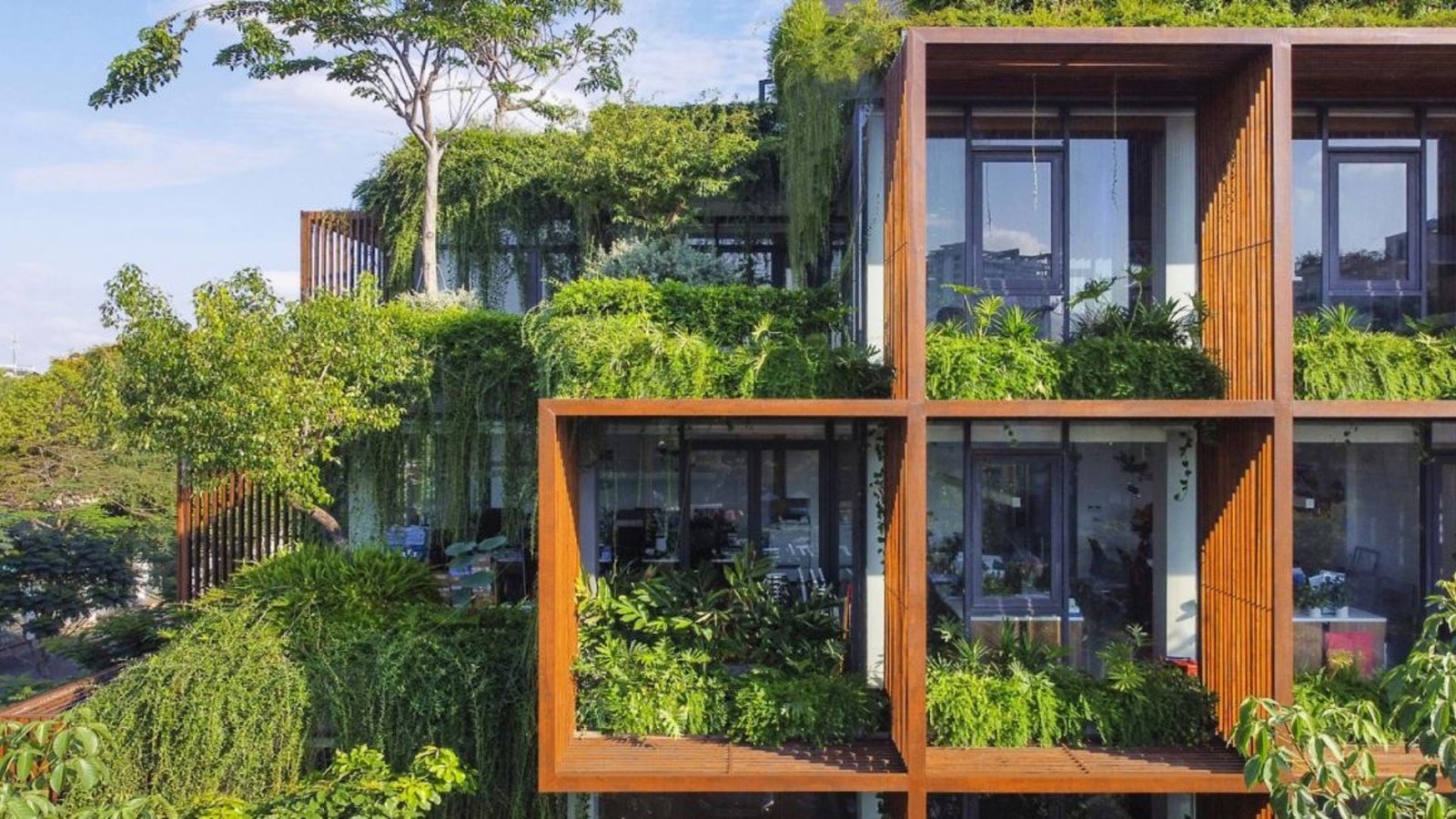Top considerations in designing Green Architecture
Green architecture, also known as sustainable architecture, emphasizes minimizing negative impacts on the environment while enhancing occupant comfort and well-being. By integrating eco-friendly practices and technologies, architects can create buildings that contribute positively to their surroundings.
Designing Green Architecture
1. Energy Efficiency Through Passive Design
Maximize energy efficiency with passive design strategies like optimal solar orientation, natural ventilation, and shading elements to reduce heat gain and reliance on mechanical systems.

2. Sustainable Materials Selection
Choose locally sourced, renewable materials with minimal environmental impact throughout their lifecycle, promoting resource conservation and reducing carbon footprint.
3. Efficient Use of Water Resources
Implement water-efficient systems such as rainwater harvesting, grey water recycling, and low-flow fixtures to reduce water consumption and support sustainable water management practices.
4. Integration of Renewable Energy Sources
Integrate renewable energy sources like solar panels, wind turbines, and geothermal systems to generate clean energy onsite and reduce dependence on fossil fuels.
5. Thermal Comfort and Insulation
Prioritize thermal comfort by using high-performance insulation materials and optimizing building envelope design to minimize energy demands for heating and cooling.
6. Green Roof and Living Walls
Utilize green roofs and living walls to enhance air quality, regulate indoor temperature, reduce stormwater runoff, and provide habitat for urban biodiversity.
7. Lifecycle Assessment and Carbon Footprint
Conduct lifecycle assessments to evaluate environmental impacts from construction to demolition, aiming to reduce carbon emissions and overall environmental load.
8. Adaptive Reuse and Upcycling
Promote adaptive reuse and upcycling of existing structures and materials to minimize waste generation, preserve embodied energy, and lower environmental impact.
9. Indoor Environmental Quality
Enhance indoor environmental quality with natural light, low-emission materials, efficient ventilation systems, and acoustical treatments to support occupant health and well-being.
10. Resilience to Climate Change
Design buildings resilient to climate change impacts such as extreme weather events and rising temperatures, ensuring durability, safety, and long-term performance.
11. Smart Building Technologies
Integrate smart technologies for energy management, real-time monitoring, and predictive maintenance to optimize building performance and efficiency.
12. Biodiversity Conservation
Design landscapes with native plants, green corridors, and sustainable drainage systems to promote biodiversity, ecological resilience, and urban habitat preservation.
13. Community Engagement and Education
Engage stakeholders through educational programs and participatory design processes to foster environmental awareness and promote sustainable building practices.
14. Regulatory Compliance and Certifications
Adhere to green building certifications like LEED and local environmental regulations to ensure compliance with sustainability standards and best practices.
15. Continuous Monitoring and Improvement
Implement post-occupancy evaluations, monitor resource consumption, and gather feedback to continuously improve building performance and sustainability initiatives.
Conclusion
Designing green architecture involves a holistic approach to sustainability, integrating energy efficiency, sustainable materials, water conservation, and resilience to environmental challenges. By prioritizing these considerations, architects can create buildings that not only minimize environmental impact but also enhance occupant comfort, health, and well-being. Embracing green architecture principles contributes to a more sustainable built environment and supports global efforts towards environmental stewardship and resilience in urban development.



